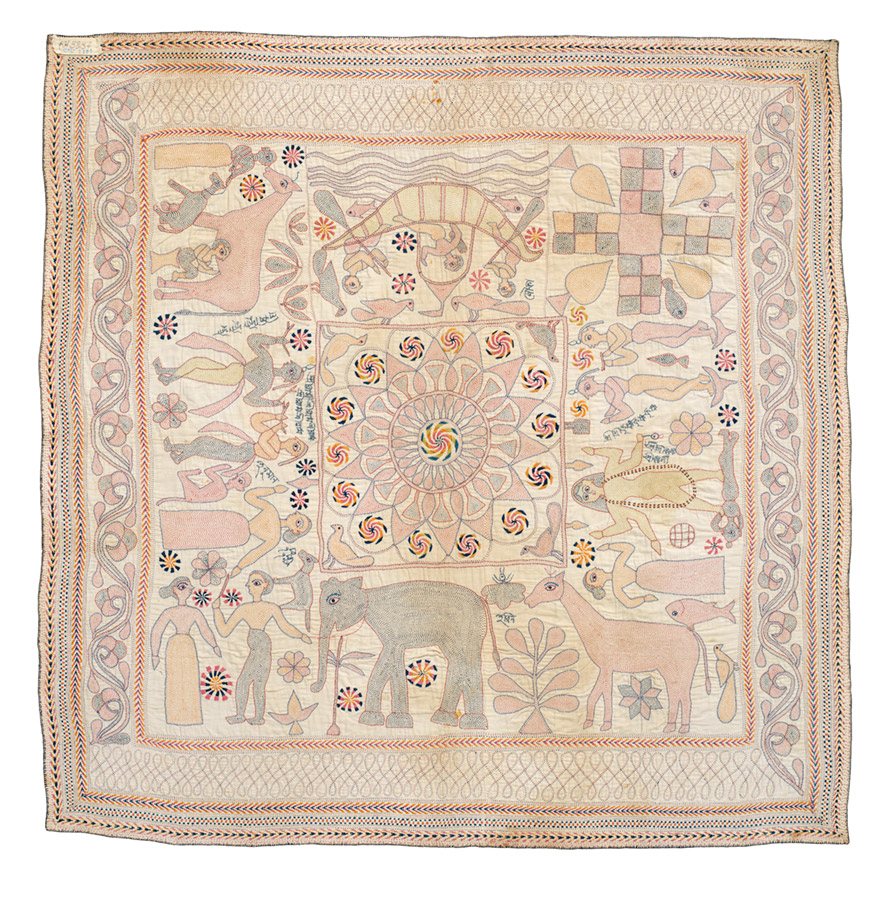Embroidered Dreams: A Personal Appreciation of Bengali Kanthas
- click on the image to enlarge | click on the Expand icon upper left to enlarge further
click Esc to close and return to this page
PLATE 27
c. 1900
Cotton plain weave; hand-sewn, quilted, and embroidered with cotton thread
89 in. x 89 in. (226.1 cm x 226.1 cm)
Mingei International Museum, Gift of Courtenay C. McGowen, 2013-33-020
This exceptionally well-executed baytan kantha has a central mandala surrounded by a lively border of Hindu gods. Kali, with a string of skulls around her neck, appears on one side, and Krishna and the gopis are on the other; they are joined by delightfully whimsical animals, an elephant and a horse, as well as a boat and a game board for chopat. The kantha is embroidered in red, blue, yellow, green, and black thread, and it dates to around 1900. The stitching is exceptionally even and fnely done on the fgures, which are well drawn. The inscriptions are invocations of Krishna and Kali: “shri shri krishna” and “shri shri kali shri kali.” Labels refer to a “nauk,” or boat; Hanuman, the monkey god; a dog, “kukur”; and a deer, “harin.” An invocation of Rama is repeated fve times.
Notes:
1. Shri Shri Krishna Krishna
Shri Shri Kali shri Kali
Invocations of the Hindu deities Krishna and Kali
2. nauk›=boat
3. Shri Shri Krishna (milking a cow?)
4. Shri Ram x5 (invocation of Rama), the divine hero of Ramayana, the epic of Valmiki.
5. hanuman (a species of simian but also the name of the monkey god)
6. kukur (dog)
7. harin (deer)
